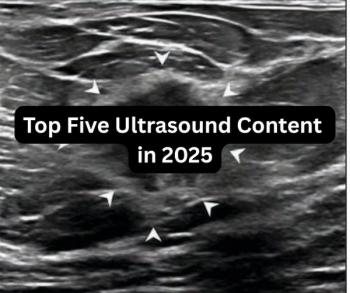
Effect of CAD on Lung Cancer Screening
Radiologists' use of CAD systems as a second reader to catch missed nodules during lung cancer screening.
Computer-aided detection (CAD) systems can be a useful second reader back-up for radiologists screening for lung cancer, according to an article published in
Researchers from the Icahn School of Medicine at Mount Sinai in New York City and Cornell University, Ithaca, NY, sought to determine if CAD was a useful tool to help radiologists detect lung cancers during early imaging.
The researchers obtained images of 50 lung cancers that manifested as a solid nodule on CT scans in annual rounds of screening (time 1). Time zero was when all cancers were missed. Four CAD systems (CAD 1, CAD 2, CAD 3, and CAD 4) were compared to the radiologists’ findings. Two radiologists assessed the CAD-system detected nodules, and they also documented the solid nodules that were not detected by the CAD system.
The average diameter of the 50 cancers at time 0 and time 1 was 4.8 mm and 11.4 mm, respectively. The results showed that the CAD systems detected at least 56% of the nodules.
The number of CAD-system–detected nodules that were rejected per CT scan for CAD systems 1 to 4 at time 0 was 7.4, 1.7, 0.6, and 4.5 respectively.
The researchers concluded that most of the lung cancers, up to 70%, that had not been detected by the radiologist upon screening were detected by the CAD systems, however, about 20% of the nodules that were detected by radiologists were not picked up by the CAD system.
Newsletter
Stay at the forefront of radiology with the Diagnostic Imaging newsletter, delivering the latest news, clinical insights, and imaging advancements for today’s radiologists.




























